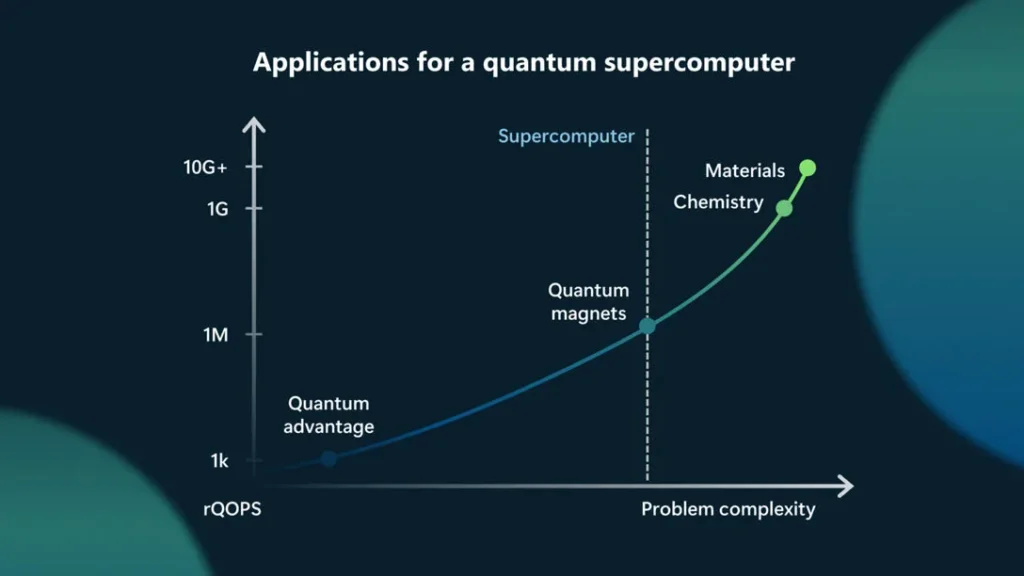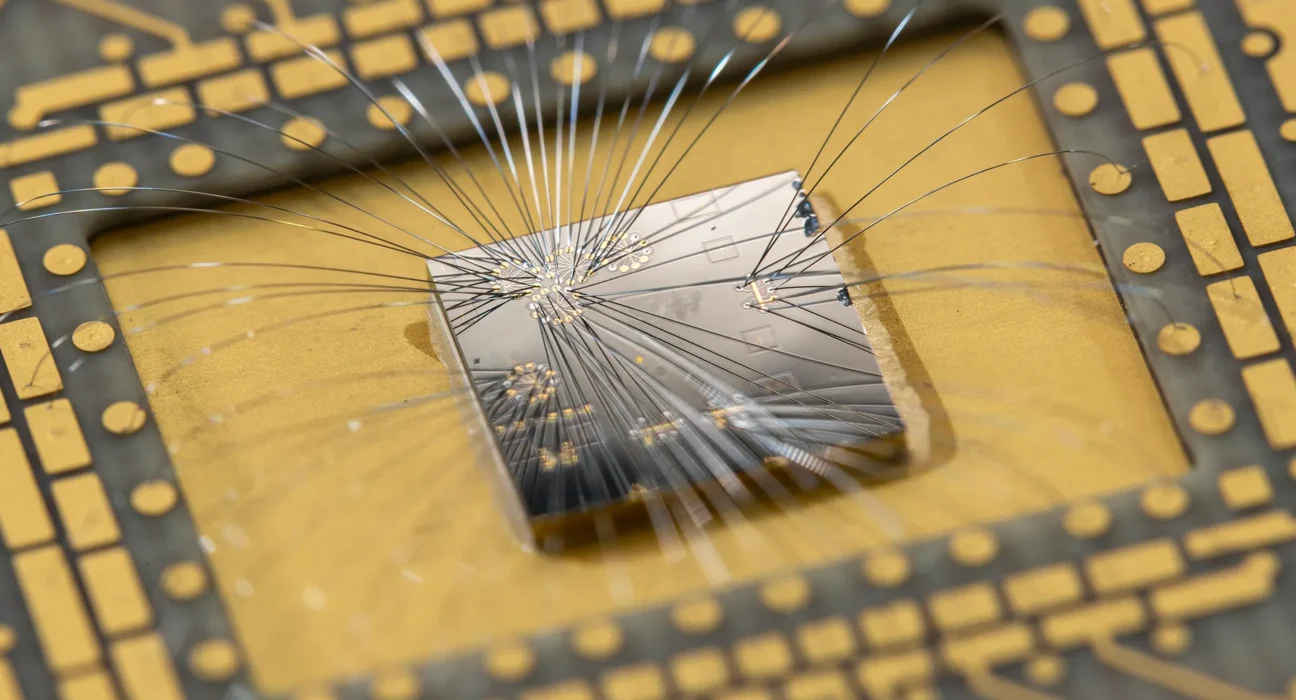 WireUnwired Brief:
WireUnwired Brief:
1.DARPA and Microsoft collaboration: The U.S. Defense Advanced Research Projects Agency (DARPA) has selected Microsoft as a partner to explore scaled quantum computing in support of DARPA’s broader quantum strategies.
2.Microsoft’s unique approach: Microsoft is working to deliver quantum at scale by engineering a unique, stable qubit using topological insulators. This approach is theorized to enable a small, fast, and fault-tolerant quantum machine that can control more than one million qubits
3. Underexplored Systems for Utility-Scale Quantum Computing (US2QC) Program, invests in companies that are using promising, innovative approaches in their efforts to design and build a functional, scalable quantum computer.
- Carry Lookahead Adders Explained: Why Tree-Based Logic Powers Modern CPUs ?
- What Is AMBA? A Simple Guide to Advanced Microcontroller Bus Architecture for SoC Designers
- How Wind Turbines Deliver Stable 50Hz Power at variable Wind Speed?
- Disney vs Midjourney Lawsuit Could Redefine Generative AI: Wireunwired Report
- Nvidia’s $4.5B Lesson to Every Hardware Company: You Can’t Out-Innovate Sanctions
One of the most ambitious goals in quantum computing is to build a machine that can perform tasks that are impossible or extremely difficult for conventional computers. This would require a quantum computer that is stable and accurate enough to handle complex problems in various domains.
DARPA, the agency that funds cutting-edge research for the US military, has launched a program to explore its potential. The program, called US2QC, stands for Underexplored Systems for Utility-Scale Quantum Computing supports companies that are developing novel and promising ways to create and operate a quantum computer at a large scale.
One of the companies that has received DARPA’s backing is Microsoft Azure Quantum, which is working on a quantum computer based on topological qubits. These are special types of qubits that are more resilient to noise and errors, which are major challenges for quantum computing.
Quantum Utility:
Quantum utility is what we get when a quantum computer is able to perform reliable computations at a scale beyond brute force classical computing methods. It does not constitute a claim that quantum methods have achieved a proven speed-up over all known classical methods.
Entering the era of quantum utility means the quantum computers we have today are valuable, useful tools researchers can use to explore meaningful scientific problems.
We are looking forward to extending our collaboration with DARPA as we continue to make progress in the design and validation of a scalable quantum computer. Having successfully completed the first phase, which involved providing a detailed explanation of Microsoft Azure Quantum’s technology to DARPA, we will now focus our efforts on designing a prototype of a topological quantum computer.
Dr. Chetan Nayak, Technical Fellow and Distinguished Engineer, Microsoft Azure Quantum hardware team.
Challenges to Quantum Computing:
Building a quantum computer that can solve real-world problems is very hard, and Microsoft Azure Quantum is tackling this challenge with a novel approach based on topological qubits.
Quantum computing is a field of computer science that exploits the properties of quantum physics to perform calculations that are impossible or impractical for classical computers. Quantum computers use quantum bits, or qubits, to store and manipulate information. Unlike classical bits, which can only be in one of two states (0 or 1), qubits can be in a superposition of both states at the same time, which allows them to encode more information and perform parallel operations.
However, qubits are also very fragile and sensitive to noise and interference from their environment, which can cause them to lose their quantum state and introduce errors in the computation. This problem becomes worse as the number of qubits increases, because more qubits means more interactions and more noise. Therefore, building a quantum computer that can scale to a large number of qubits and maintain high accuracy is extremely challenging and requires scientific and engineering breakthroughs
Possible Solution for Fault Tolerant Quantum Computing
One way to overcome this challenge is to use fault-tolerant quantum computing, which is a technique that corrects errors in qubits by using extra qubits and complex algorithms. However, this technique also has drawbacks, such as requiring a lot of resources and slowing down the computation. Moreover, not all types of qubits are suitable for fault-tolerant quantum computing, because some of them are too large, too slow, or too hard to control.
Microsoft’s Topological Qubit Approach
That’s why Microsoft Azure Quantum is developing a Quantum Computer based on topological qubits, which has built-in error protection and unique scalability advantages. A topological qubit is based on a special kind of particle, called a Majorana fermion, which has the property that it can exist in two places at once. By braiding these particles together in a certain way, one can create a qubit that is immune to local noise and errors.

Benefits of topological Qubits:
The benefits of topological qubits are threefold: they are small, fast, and digital. They are small because they only require a few nanometers of space, which means that they can be packed densely on a chip. They are fast because they can process information at gigahertz frequencies, which means that they can perform operations much faster than other types of qubits. And they are digital because they can be controlled by electric signals, which means that they can be integrated with existing electronics and software.
These characteristics make topological qubits ideal for building a quantum computer that can scale to the level at which it can solve commercially significant problems far too complex for classical computers, such as those in chemistry and materials science. Microsoft estimates that a computer built with topological qubits will be able to control over one million physical qubits on a single chip, which is enough to perform extremely complex computations in a practical timeframe, yet the computer itself would be small enough to fit in a closet.
rQOPS:Key metric to measure performance
A key metric that measures the performance of a quantum computer is the reliable quantum operations per second (rQOPS), which represents how many quantum operations the computer can execute with high accuracy in one second. A quantum computer with a high rQOPS would have an advantage over classical computers when it became capable of performing millions of rQOPS, which means that it would produce at most one error for every trillion operations. Existing quantum computers have an rQOPS of zero because they operate with qubits that are unreliable and noisy.

- Carry Lookahead Adders Explained: Why Tree-Based Logic Powers Modern CPUs ?
- What Is AMBA? A Simple Guide to Advanced Microcontroller Bus Architecture for SoC Designers
- How Wind Turbines Deliver Stable 50Hz Power at variable Wind Speed?
- Disney vs Midjourney Lawsuit Could Redefine Generative AI: Wireunwired Report
- Nvidia’s $4.5B Lesson to Every Hardware Company: You Can’t Out-Innovate Sanctions
Next Phase of collaboration between DARPA and Microsoft
In a major milestone for quantum computing, Microsoft and DARPA have announced that they are moving forward with the next phase of their collaboration to design a Fault-Tolerant Prototype (FTP) of a quantum computer. This prototype will use topological qubits.
The FTP will be a small-scale quantum computer that can perform computations using multiple logical qubits, each composed of thousands of physical qubits. This will set the foundation for building and operating a large-scale quantum computer that can solve problems beyond the reach of classical computers.
Microsoft’s Azure Quantum team will provide DARPA with the detailed design specifications for the FTP, including the minimum performance requirements for all components and subsystems. DARPA will then assess the feasibility and scalability of the proposed design, as well as verify the scientific discoveries made by Microsoft during the development process.
This project is part of DARPA’s Quantum Leap program, which aims to accelerate the development and deployment of quantum technologies for national security and economic competitiveness. Microsoft is one of the four industry partners selected by DARPA to participate in this program, along with IBM, IonQ, and ColdQuanta.
Carry lookahead adders solve the delay problem in ripple-carry designs by predicting carry signals in advance. This article breaks down the difference between standard and tree-based CLA logic, and why log₂(n)-stage trees are used in high-speed chips today.
Learn how AMBA (Advanced Microcontroller Bus Architecture) powers communication inside modern SoCs. From APB to AHB and AXI, explore the protocols, FSMs, and design benefits — explained clearly for embedded and chip engineers.
Learn how wind turbines deliver stable 50Hz power using AC–DC–AC conversion, IGBT rectifiers, and smart control systems. Perfect for engineers, energy enthusiasts, and renewable tech followers.
In an iconic “Disney vs Midjourney Lawsuit” ,Disney and Universal are suing Midjourney for letting users generate AI images that resemble their …
Discover more from WireUnwired
Subscribe to get the latest posts sent to your email.










1 Comment